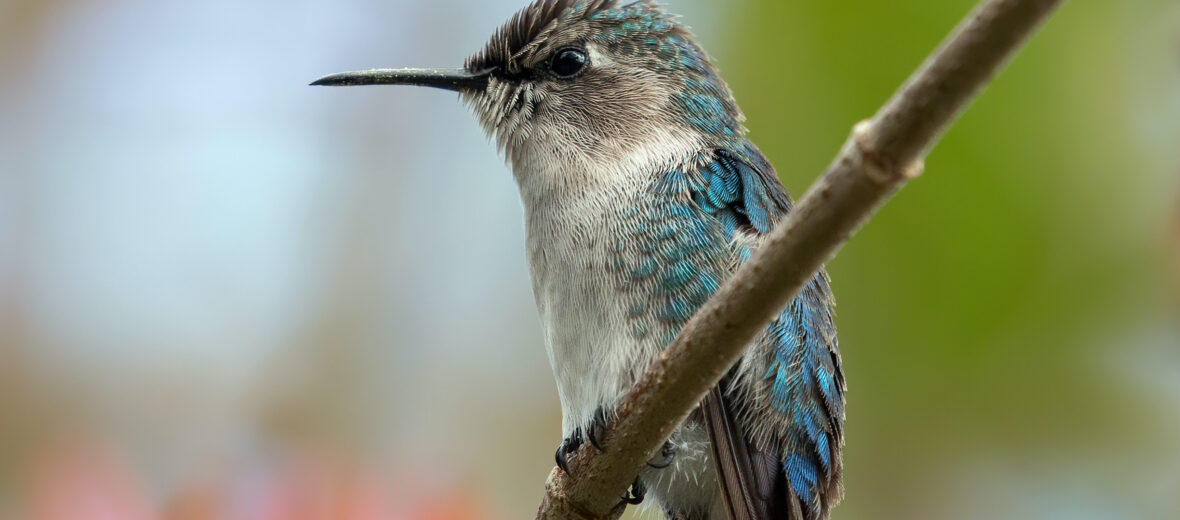
And the award for world’s smallest known bird goes to the bee hummingbird. These tiny avians can only be found on the Cuban archipelago, the main island of Cuba, and the Isla de la Juventud in the Western Indies. They are so small that they are often mistaken for insects. The bee hummingbird prefers dry forests, rainforests, swamplands, forest edges with bushes and lianas, mountain valleys, and gardens. Unfortunately, due to habitat loss at the hands of agriculture, these diminutive critters are listed as Near Threatened by the IUCN; and their numbers are decreasing.
First the Stats…
Scientific name: Mellisuga helenae
Weight: Up to .07 ounce
Length: Up to 2.4 inches
Wingspan: Up to 1.5 inches
Lifespan: Up to 10 years
Now on to the Facts!
1.) These birds are solitary and will aggressively chase away other hummers, if they feel they are being encroached upon. Pretty brazen for a wee little bird.
2.) They communicate via squeaking, high-pitched songs, twittering sounds, and also produce a “tsit” call when feeding.
3.) A group of hummingbirds is called a charm, a shimmer, a tune, a glittering, a bouquet, a hover, or a lek.
4.) They are nectarivores (feed on nectar, from flowers) but will occasionally eat spiders and other small insects.
5.) Females are slightly larger than males.
But wait, there’s more on the bee hummingbird!
6.) These little gluttons will consume up to half their body weight in nectar a day, pollinating up to 1,500 flowers each day.
7.) Females lay up to 2 eggs each season.
Did you know…?
Like all hummingbirds, bee hummingbirds can fly straight up, down, backward, and even upside down. They can also hover in mid-air.
8.) Their nest is the size of a quarter! It is made from bark, lichen, and cobwebs and is then lined with soft plant material.
9.) The eggs are roughly the size of a pea.
10.) Between March – June males will come together in a shimmer to compete for breeding rights to females. They have a battle of mating displays designed to woo the girls.
But wait, there’s still more on the bee hummingbird!
11.) Bee hummers are polygamous (1 male mates with several females).
Did you know…?
Bee hummingbirds can fly up to 30 mph! When hovering, their wings can beat up to 80+ times per second!
12.) Only the females tend to the young.
13.) During the mating season, the male’s head, chin, and throat turn reddish to pink.
14.) When flying, they can take up to 25+ breaths per second!
15.) Their heart rate is up to 1,200 beats per minute!
16.) They are capable of flying for up to 20 hours without a break. But this uses a ton of energy, so they spend most of their free time resting to conserve energy.
Now a Short Bee Hummingbird Video!
Be sure to share & comment below! Also, check out the Critter Science YouTube channel. Videos added frequently!
Want to suggest a critter for me to write about? Let me know here.



